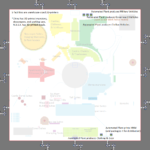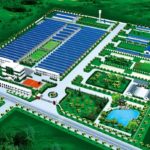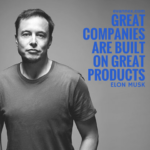Inisfree includes many factories, all of which are based on advanced 3D-printing technology.
–
Table of Contents:
- Introduction
- Directory
- All our factories are laid out the same way
- Best Possible Factory Design
- Orders: Historical and Projected
- 2022 Update: History
- Additional Notes
–
Introduction:
Originally called “Auto Autos Fac’s”, for Automated Automobile Facilities, this previous name noted how the 3D-printing removed virtually all human/manual labor, and (when compared to ‘Cloning Facility’) hinted at how there used to be a primitive mis-distinction between producing vehicles versus producing people (the ICVs); both involve 3D-printing, automation, cloning (copying), facilities, factories, and production. Today, while “Auto Fac’s” and “Autos Fac’s” are outdated terms, they are sometimes still used by our long-time visitors and residents.
–
Here are the automated factories of Inisfree:
- Art & School Supplies: even though our schools 3D-print all they need; this supplies non-students
- Civilian Vehicles: cars, motorcycles, trucks, etc.
- ColonyPods: the city-building Spaceships of our empire
- Dishes & Utensils: everything people in our realm eat on and drink from
- Food Processing: where produce from the Cropland goes for mixing & packaging
- Furniture & Bedding: many furniture types, mattress, pillows, sheets, & accessories
- Gear: such as body armor
- Generic Clothing: many of the products found in Inisfree’s mall
- Hygiene Items: deodorant, shampoo & conditioner, soap & bath suds, etc.
- ICVs: (formerly ‘Cloning Facilities’) the hostesses of Inisfree are made here
- Kitchen Items: cookware; non-dishware and non-utensils/cutlery; pans, pots, stirring implements, etc.
- ‘Kno’ Clothing Brand: Inisfree’s signature racy brand only for the fittest & flirtiest
- MKM Magazines: Auz’s own satirical, edgy, military-humor, monthly publication
- Military Vehicles: APCs & tanks for the ICVs
- Municipal Vehicles: luxury buses, shuttles, and the ‘Work-horse’ vehicles
- Recycling: a factory that converts anything into anything
- Toys: action figures, adult items, play-sets, scale models, etc.
–
All our factories are laid out the same way:
- Ports: selective receiving tubes/tanks from local/Outlands sources/mines; these receive the ore our devices mine and ship to them (and sometimes are linked directly to off-world resources, such as unoccupied asteroid belts, solar winds, etc.)
- Elutriation Membrane/s: internal/in-house filters; these separate the main and coarse/crude elements of the ore received
- Staging: slush tanks which hold fluid matter easily separated into subatomic particles; these take the filtered ore types and render them less of a solid and more of a liquid
- and these maintain the temperature which each synthetic material/atom needs to be kept at in order to stay fluid and then harden/bond with the others at the right time during the printing process; the tanks keep them at the ideal temperature(s) so they bond instantly and perfectly during printing
- Transmuters/Converters: subatomic shifters/ratio-adjusters; these adjust the ratio of electrons, neutrons, and protons in the atoms fed through them, thereby changing any atom into any other kind of atom, as needed
- Cartridges: atomic & subatomic particle tanks that feed into the 3D-printer heads; we don’t print in ink, plastic, and clay, but on a much smaller and more precise scale
- 3D-printers: these are state-of-the-art in this field of technology, and print not documents or simple dwelling walls, but living beings ranging from people to conscious vehicles and ships
- 3D-printer trays/compartments: pedestals for ICVs, and sealed modules ranging from the size of cushions to large garages and hangars
- Maintenance Crawl-spaces: for ICVs, drones/UAVs, and nano/bug-bots
Our factories have no lights or forklifts; ICVs see in the dark and lift all things easily, utilizing the weight-canceling Repulsine-field technology to aid in this work. ICVs also hover things and portal them; they can move them easily through air, time, and Space, covering great distances with virtually no exertion. There is also no plastic wrap, nor any cardboard boxes, as is the case in most Outlands factories; our products are self-sealing and completely immune to ‘the elements’.
–
Best Possible Factory Design:
All of our factories are downstream, away from homes, soundproof, underground, use as little energy as possible, do not use child labor or underpay the workers, and make only exactly what is needed, not being based on growth or competition. Our goal was to make factories that do not pollute or otherwise harm people in any way. Now that we have achieved this, we invite you to come check out how we brought their designs to life, that you might then go on to start, fix, or otherwise improve great factories of your own.
–
Orders: Historical and Projected
Collectively, the factories of Inisfree get tens of millions of orders each second; that’s comparable to the customer demand on mega-corporations such as Amazon.com. In the beginning (the early 2010s), there were none at all. After 2013, that quickly changed, and the orders have been slowly and steadily increasing in frequency ever since.
To get an estimate for how many orders are placed for our factories, go to one of the following years or year-ranges, take the “guest population” number, divide that by 13 to get the average number of people visiting or living in our city each month that year, divide that by 28 to get the number per day, and assume that final number is close to the number of orders for bedding, clothing, vehicles, and vehicle modifications, among other things. For example, with ~1,000,000 visitors in 2014, there were ~76,923 in Inisfree each month that year, so probably ~2,747 orders per day; 114/hour; 2/minute.
20,000,000+/second (“tens of millions of orders each second”)… is 1,200,000,000/minute; 72 billion per hour; 1.728 trillion per day; that would be ~864 orders for every person visiting or living in our city, at capacity in the distant future (meaning ~2,000,000,000 people).
That sounds like a lot, but they are ordering individual items as they think of them, such as a book, a custom piece of clothing, a ‘home accent’ (such as a candle or pillow), a pen or other art & writing supply, a tablecloth, a vehicle tool or replacement part, and so on. Their staff and kajirae place orders, too. Also, they can place orders for their trusted associates outside Inisfree; this results in items such as printed issues of MKM being loaded up onto our cargo trucks for transport later. Even kajirae and public-grade ICVs can be ordered and prepared for shipping via these factories of ours.
- 2013-2015:
indigenous population: 100,000,000 (400,000,000 went into the newly-created Star-system Auzdein to help establish the Inisfreean-made vessels, cities, and worlds there, later becoming members of those creations’ permanent populations)
guest population: ~1,000,000 Earth humanoids
total population: ~101,000,000 - 2015-2100:
indigenous population: 100,000,000
guest population: ~5,000,000 Earth humanoids
total population: ~105,000,000 - 2100-2200:
indigenous population: 100,000,000
guest population: ~10,000,000 Earth humanoids
total population: ~110,000,000 - 2200-2300:
indigenous population: 100,000,000
guest population: ~20,000,000
total population: ~120,000,000 - 2300-2400:
indigenous population: 100,000,000
guest population: ~30,000,000
total population: ~130,000,000 - 2400-2500:
indigenous population: 100,000,000
guest population: ~40,000,000
total population: ~140,000,000 - 2500-2600:
indigenous population: 100,000,000
guest population: ~50,000,000
total population: ~150,000,000 - 2600-2700:
indigenous population: 100,000,000
guest population: ~60,000,000
total population: ~160,000,000 - 2800-2900:
indigenous population: 100,000,000
guest population: ~70,000,000
total population: ~170,000,000 - 2900-3000:
indigenous population: 100,000,000
guest population: ~80,000,000
total population: ~180,000,000 - 3000-4000:
indigenous population: 100,000,000
guest population: ~90,000,000
total population: ~190,000,000 - 4000-5000:
indigenous population: 100,000,000
guest population: ~100,000,000
total population: ~200,000,000 - 5000-6000:
indigenous population: 100,000,000
guest population: ~200,000,000
total population: ~300,000,000 - 6000-7000:
indigenous population: 100,000,000
guest population: ~300,000,000
total population: ~400,000,000 - 7000-8000:
indigenous population: 100,000,000
guest population: ~400,000,000
total population: ~500,000,000 - 8000-9000:
indigenous population: 100,000,000
guest population: ~500,000,000
total population: ~600,000,000 - 9000-10000:
indigenous population: 100,000,000
guest population: ~600,000,000
total population: ~700,000,000 - 10000-11000:
indigenous population: 100,000,000
guest population: ~700,000,000
total population: ~800,000,000 - 11000-12000:
indigenous population: 100,000,000
guest population: ~800,000,000
total population: ~900,000,000 - 12000-13000:
indigenous population: 100,000,000
guest population: ~900,000,000
total population: ~1,000,000,000 - 13000-14000:
indigenous population: 100,000,000
guest population: ~1,000,000,000
total population: ~1,100,000,000 - 14000-15000:
indigenous population: 100,000,000
guest population: ~1,100,000,000
total population: ~1,200,000,000 - 15000-16000:
indigenous population: 100,000,000
guest population: ~1,200,000,000
total population: ~1,300,000,000 - 16000-17000:
indigenous population: 100,000,000
guest population: ~1,300,000,000
total population: ~1,400,000,000 - 17000-18000:
indigenous population: 100,000,000
guest population: ~1,400,000,000
total population: ~1,500,000,000 - 18000-19000:
indigenous population: 100,000,000
guest population: ~1,500,000,000
total population: ~1,600,000,000 - 19000-20000:
indigenous population: 100,000,000
guest population: ~1,600,000,000
total population: ~1,700,000,000 - 20000-21000:
indigenous population: 100,000,000
guest population: ~1,700,000,000
total population: ~1,800,000,000 - 21000-22000:
indigenous population: 100,000,000
guest population: ~1,800,000,000
total population: ~1,900,000,000 - 22000-23000:
indigenous population: 100,000,000
guest population: ~1,900,000,000
total population: ~2,000,000,000 - 23000-24000:
indigenous population: 100,000,000
guest population: ~2,000,000,000
total population: ~2,100,000,000
Whether we get a billion orders a day or just a few in a “dry-spell” trickle, we’ll be ready. We’ve projected and prepared for them all. Our 3D-printers will crank out the intended products to perfection every time, and our Inisfreean girls will bring them to you, free of charge.
–
2022 Update: History
Inisfree had these factories (in 2012) before it launched the Rapture:
- Civilian Vehicles: cars, motorcycles, trucks, etc.
- ColonyPods: the city-building Spaceships of our empire
- Food Processing: where produce from the Cropland goes for mixing & packaging
- Gear: such as body armor
- Generic Clothing: many of the products found in Inisfree’s mall
- ICVs: (formerly ‘Cloning Facilities’) the hostesses of Inisfree are made here
- ‘Kno’ Clothing Brand: Inisfree’s signature racy brand only for the fittest & flirtiest
- MKM Magazines: Auz’s own satirical, edgy, military-humor, monthly publication
- Military Vehicles: APCs & tanks for the ICVs
- Municipal Vehicles: luxury buses, shuttles, and the ‘Work-horse’ vehicles
- Recycling: a factory that converts anything into anything
It added these factories after the Rapture and before 2022:
- Dishes & Utensils: everything people in our realm eat on and drink from
- Furniture & Bedding: many furniture types, mattress, pillows, sheets, & accessories
- Hygiene Items: deodorant, shampoo & conditioner, soap & bath suds, etc.
- Kitchen Items: cookware; non-dishware and non-utensils/cutlery; pans, pots, stirring implements, etc.
- Toys: action figures, adult items, play-sets, scale models, etc.
Added during/after 2023 November:
- Art & School Supplies: even though our schools 3D-print all they need; this supplies non-students
High King Auz has started ‘christening’ (with his ICVs and others) every single lane and other section of all these factories of his.
As of this year, all the ‘slush matter’ fed into any of these factories is SRC, no longer needing any mined or grown materials shipped/trucked/flown in. SRC can be teleported/portal-ed into these tanks via Inisfree’s system of private networked portals/ships (ICs). It will never run out, as SRC can be formed out of anything, and never needs to be repaired or replaced. (When we 3D-print things in Inisfree, we start with streams of SRC that are ‘sung’ into place, complex ‘songs’ helping them get into their initial positions before they start making assembled non-microscopic structures visible to the naked eye. The only exception is when we make special orders for allied clients/requesters in the Outlands; sometimes we make things with the same precision, but not out of SRC; only that which is permanently and always/actively part of our empire/community can be immortal and invincible, while all non-SRC things require alliance/proximity with us to be refreshed back into total immortality/invincibility, from time to time.)
–
Additional Notes:
The main advantage we have in these production-facilities of ours is that there is almost no waste. This is achieved thanks to 3D-printing; unlike obsolete/old-fashioned/human factories, we don’t weld overlapping parts together, but instead form them seamlessly without any welding necessary at all. This saves us a lot of time, wear & tear, maintenance/operating costs, and so on, so we get our products out the door sooner, they last longer, and they have fewer moving-parts needing to be checked or serviced.
…
2023 August: All sensors and gauges on the vehicles we in our realm make auto-self-recalibrate themselves on their regular/recommended maintenance cycle/schedule.
…
Mini cameras (the kind often on nicer Outlands personal automobiles) are on all sides of all our vehicles, including our cargo trucks, ensuring there are no blind-spots, not even beneath them; they have undercarriage cams.
All these vehicle-mounted cameras are self-wiping.
…
All our vehicles are silent; they have no engine noise. This of course includes our cargo trucks staged at the MKM Distribution facility.
Our engines give off no ambient/radiant heat; they operate at 100% efficiency.
…
Since the tires we make are white and based on not rubber, but SRC imitating rubber, they never leave skid marks on our highway or streets.
…
All our vehicles have dashboards which display not only gas level (equivalent; we don’t use gasoline, but energy and slush-matter) and oil percentage, but coolant level and all other fluids (including lubricants), plus air-filter percentage (how dirty/clogged each filter is), etc., and these vehicles can largely maintain themselves, portal-ing in replacement fluids or having an ICV serve as their mechanic anywhere in our realm.
…
All our vehicles are designed to operate well in extreme cold and hot temperatures. They do not need engine heater blankets or any other accessory to function well, as intended.
…
2024 February: Inisfree has no mines or refineries.
All its raw materials for manufacturing come from alchemy/transmutation, global cleanup campaign pollution removal, truck shipments, recycling, portals (out to Outlands mines and asteroids, etc.), and magic.
A lot of what was mined out of the central mountain would later be sent into SSA when that dimension/system was first being formed (in 2013), but a lot of that mined mass first got used to form Inisfree’s perimeter wall, and there was still some left in Inisfree afterward, that remainder used to make the first millions of vehicles (starting with the 117,010 TBMs we had in 2011, followed by other municipal/service vehicles, then personal automobiles, etc.).
Once that mined mass was depleted/used, everything else needed to form the stars and worlds and world-sized ships in SSA came from the asteroid belts (long-ago destroyed planets and moons in the Outlands).
That said, it could be argued that Inisfree does have a mine; The Abyss (Outer Space) is its mine.
All vehicles we make, just like our ships, have devices which ensure no pests crawl around where they shouldn’t be; little rodents and such which might make scratching sounds or cause other distractions are always tracked and pre-annoyed away/out (though almost always proactively deterred from getting anywhere near, let alone inside / up under the hood), whether by sounds they can’t stand, or odors (like how cedar deters moths, or peppermint oil deters spiders), or even little microwave beams.
While not a particularly useful feature in our realm (where it is no longer physically possible for pests or anything that annoys us to enter/exist), this standard feature greatly ensures sound/uninterrupted sleep, and any nighttime observations, when using those vehicles in The Outlands (such as part of our expeditions).
…
2024 April: We never just have a “check engine” light; that is far too vague.
Both our vehicles and ICVs can almost instantly tell you exactly which sensor or other part has an issue, plus how long the repair will take.
–
–


